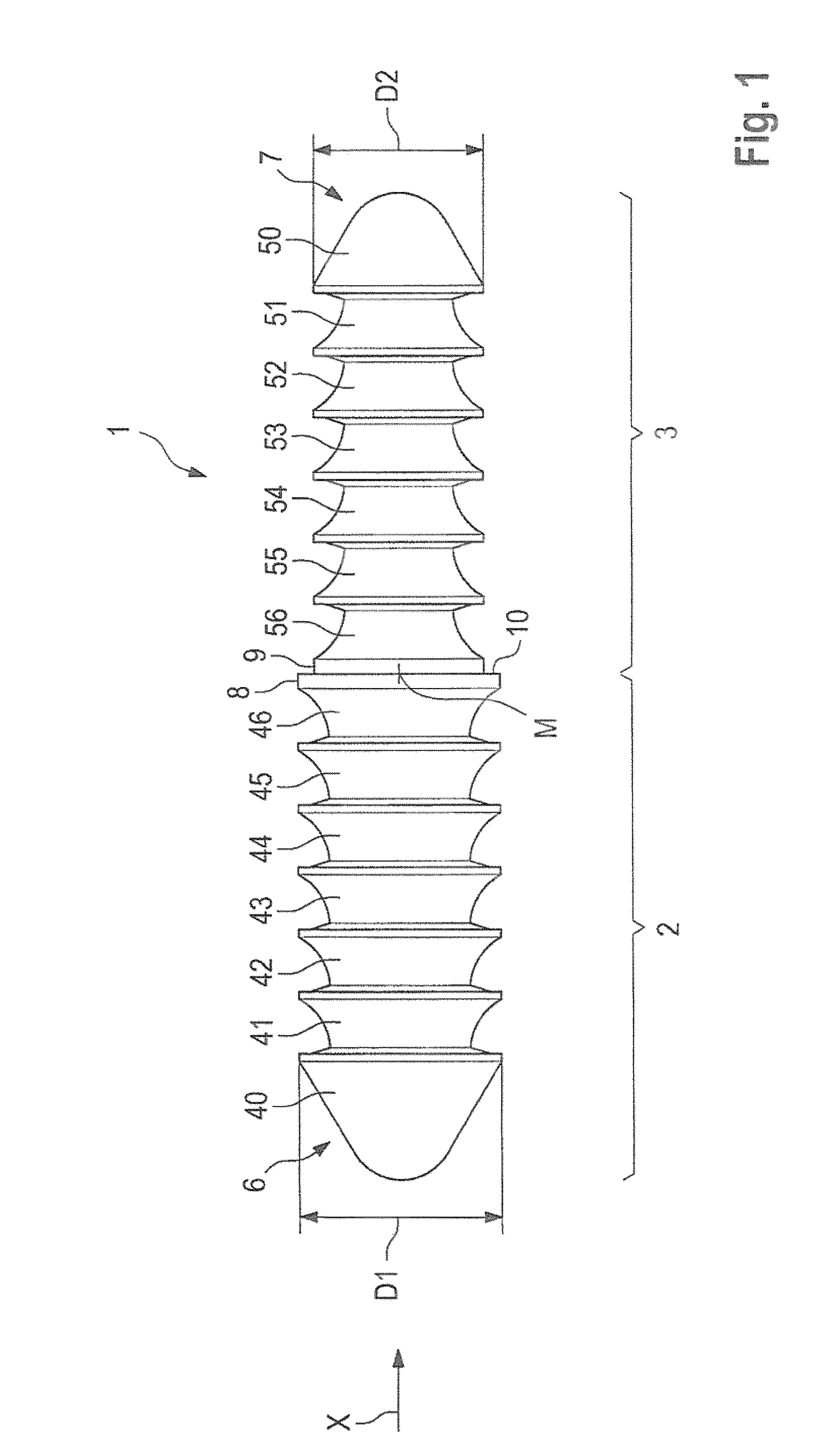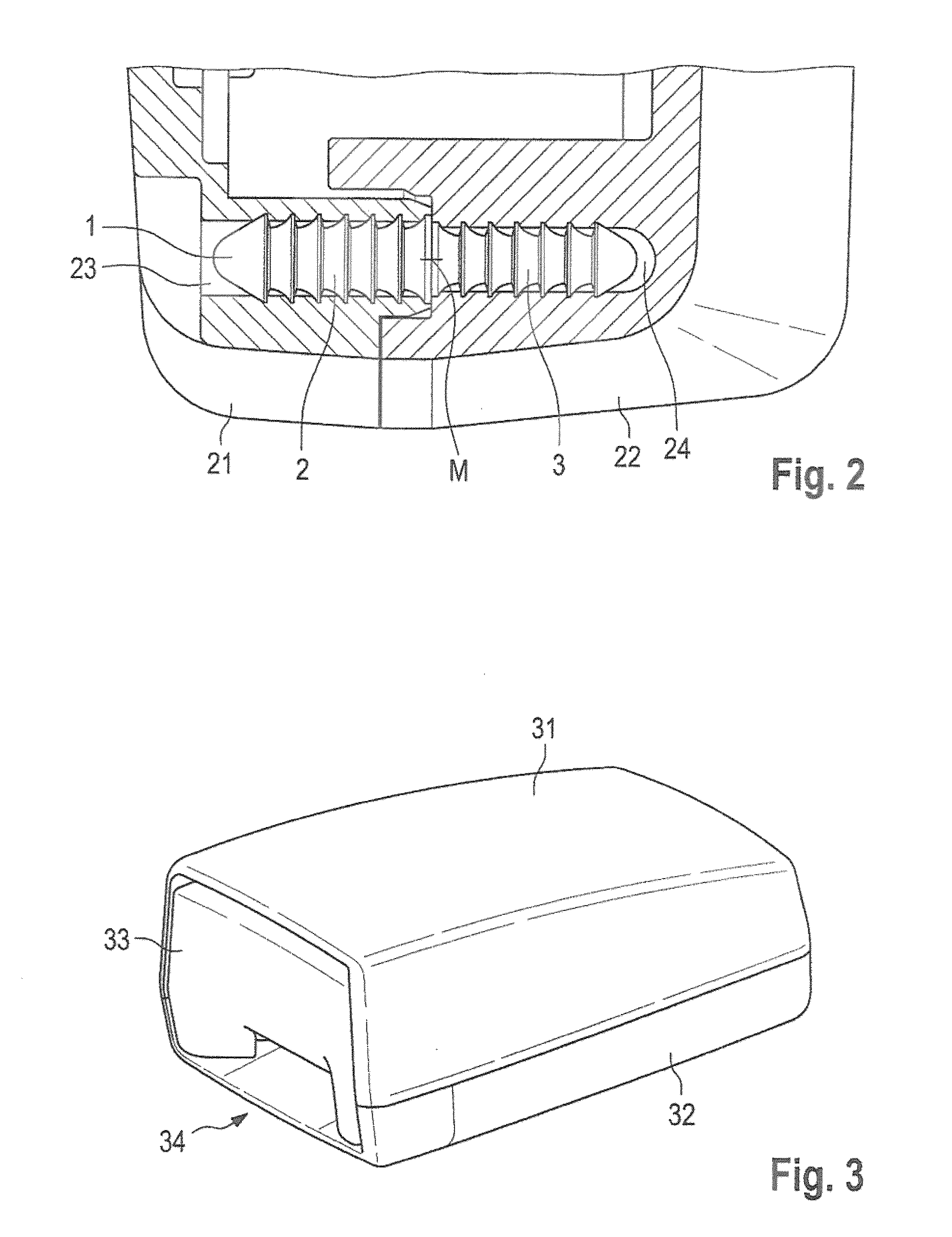Connecting member
a technology of connecting member and connecting rod, which is applied in the direction of threaded fasteners, screwdrivers, manufacturing tools, etc., can solve the problems of increasing the strength of the connection, requiring considerable technology and equipment, and the method is relatively complex
- Summary
- Abstract
- Description
- Claims
- Application Information
AI Technical Summary
Benefits of technology
Problems solved by technology
Method used
Image
Examples
first embodiment
[0031]In contrast to the first embodiment according to FIG. 1, the largest diameters D2 of the ramp-like portions of the second half 3 are equally large as the largest diameter D1 of the ramp-like portions of the first half 2.
[0032]The connecting member 1 exhibits conical free ends with rounded points.
[0033]As diameters D1, D2 are of the same size, no step is formed at center M but a uniform central section 60. This section may have a larger outer diameter than diameters D1 and D2 of the ramp portions of the first and / or second half and thus serve as stop for setting the insertion depth, facilitating connection and also causing self-adjustment. Hence, the parts to be connected into which the connecting member 1 is inserted always meet in a form-locking manner at the central section 60 of the connecting member 1 making use of the central section 60.
[0034]The ramp portions do no longer continuously widen as shown in FIG. 1 but comprise two sections identified by way of example in ramp...
second embodiment
[0035]FIG. 5 is a sectional view of a housing comprising a first part 21 and a second part 22 connected by means of an inventive connecting member 1 shown in FIG. 4. This embodiment of the connection basically corresponds to that of FIG. 2, the connecting member 1 now having identical outer diameters D1 and D2 (cf. FIG. 4). Here, the central section 60 now serves as stop for one or both housing parts 21 and 22. So as to achieve a form-locking connection, a recess 61 is provided in at least one housing part 21, 22 which is deep enough to at least receive half of the central section 60. Advantageously, the recess 61 may, on one side or on both sides (i.e. either in housing part 21 or in housing part 22 or in both housing parts), be slightly deeper than half or the entire thickness of the central section 60.
PUM
| Property | Measurement | Unit |
|---|---|---|
| Fraction | aaaaa | aaaaa |
| Diameter | aaaaa | aaaaa |
| Shape | aaaaa | aaaaa |
Abstract
Description
Claims
Application Information
 Login to View More
Login to View More - R&D
- Intellectual Property
- Life Sciences
- Materials
- Tech Scout
- Unparalleled Data Quality
- Higher Quality Content
- 60% Fewer Hallucinations
Browse by: Latest US Patents, China's latest patents, Technical Efficacy Thesaurus, Application Domain, Technology Topic, Popular Technical Reports.
© 2025 PatSnap. All rights reserved.Legal|Privacy policy|Modern Slavery Act Transparency Statement|Sitemap|About US| Contact US: help@patsnap.com



